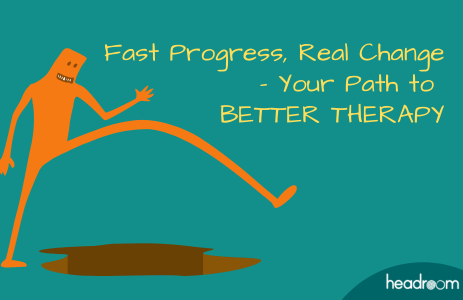Teacher burnout is an escalating issue in educational environments. As educators, we face immense pressures that often lead to psychological overwhelm. Many of us turn to self-taught coping mechanisms, hoping to manage stress through sheer resilience or small strategies. But when the demands of teaching pile up, these quick fixes fall short. Real help for teacher burnout has become a pressing need in schools around the world. In this article, we’ll explore why our self-guided approaches often fail and discuss the structured, lasting solutions professional support can provide. By seeking targeted assistance, we can prevent burnout from taking over our careers and personal lives.
The Limitations of Self-Taught Coping Mechanisms
Understanding Teacher Burnout
Teacher burnout is more than just occasional stress; it’s a chronic condition characterized by emotional exhaustion, depersonalization, and a reduced sense of personal accomplishment (Maslach & Jackson, 1981).
Despite our best efforts to manage these feelings independently, self-taught coping mechanisms often fail to provide lasting relief.
Why Our Strategies Fall Short
- Lack of Depth and Professional Guidance
Self-taught strategies may only address surface-level symptoms rather than the deep-seated issues underlying burnout. Techniques like “thinking positively” or simply taking breaks might temporarily relieve stress but rarely tackle the root causes. Research shows that untreated stress leads to long-term health issues, including anxiety and depression (Shonkoff, 2012). - Inconsistency and Lack of Accountability
Without a structured plan or professional guidance, it’s easy to fall back into old habits. Professional counselors and coaches provide the consistency and accountability we need, helping us apply techniques effectively and consistently. - Isolation and Limited Perspective
When we rely solely on self-help methods, we’re left alone in our struggle. Professional support offers us an outside perspective that helps identify our blind spots and reinforces healthy coping mechanisms, like resilience and emotional regulation.
Dr. Christina Maslach, a leading researcher on burnout, notes that “burnout is a response to chronic interpersonal stressors on the job” (Maslach, Schaufeli & Leiter, 2001). This suggests that individual efforts may not suffice when the stressors are systemic.
Aspects of Teacher Burnout We Often Struggle With
- New Educators:
Struggle with classroom management and adapting to school culture. Those in the early stages of their careers may lack experience in stress management, making burnout feel more intense. It is not unusual to question your career choice amid unexpected challenges. - Experienced Teachers:
Face monotony and feel stagnant due to limited advancement opportunities. Teachers balancing classroom duties and administrative roles face “role strain” that self-help strategies may not address. - Veteran Teachers:
Long-serving educators may experience emotional fatigue, compounded by years of stress. Self-taught techniques often fail to rejuvenate the deep-seated sense of burnout. - Rural Teachers:
Deal with resource limitations and community pressures. - Urban Teachers:
Confront large class sizes and administrative demands.
How Professional Support Can Help
The Role of Coaching, Counselling, and Therapy
Professional support offers personalized strategies to combat burnout:
- Counselling: Provides a confidential space to explore feelings and develop coping strategies.
- Coaching: Focuses on professional development and practical solutions in the classroom
- Therapy: Addresses deeper psychological issues, such as anxiety or depression.
These professionals excel in communication and emotional intelligence, essential skills for navigating sensitive topics and interpersonal differences.
Effective Modalities
- Cognitive Behavioural Therapy (CBT): This approach helps reframe negative thoughts and build resilience. CBT is particularly helpful in transforming the mindset that exacerbates stress and burnout (Beck, 1997).
- Mindfulness-Based Stress Reduction (MBSR): Teaches stress management through mindfulness practices (Kabat-Zinn, 1990).
- Solution-Focused Brief Therapy (SFBT): Concentrates on finding immediate solutions to specific problems (de Shazer, 1985).
- Coaching: Professional coaching guides us in goal setting and stress management, providing us with skills to handle classroom challenges. Coaching fosters accountability, making it easier to establish lasting changes in behavior.
- Emotional Intelligence and Interpersonal Skills: Therapists are trained in these areas, which help teachers handle classroom stress and improve their interactions with students and colleagues.
For Your Reflection
References
Beck, A.T. (1997). Cognitive Therapy and the Emotional Disorders. Penguin Books.
Shonkoff, J.P. (2012). The lifelong effects of early childhood adversity and toxic stress. Pediatrics, 129(1), e232-e246.
Beck, J. S. (2011). Cognitive Behavior Therapy: Basics and Beyond. Guilford Press.
de Shazer, S. (1985). Keys to Solution in Brief Therapy. W. W. Norton & Company.
Kabat-Zinn, J. (1990). Full Catastrophe Living. Delta.
Maslach, C., & Jackson, S. E. (1981). The measurement of experienced burnout. Journal of Occupational Behavior, 2(2), 99-113.
Maslach, C., Schaufeli, W. B., & Leiter, M. P. (2001). Job burnout. Annual Review of Psychology, 52(1), 397-422.




